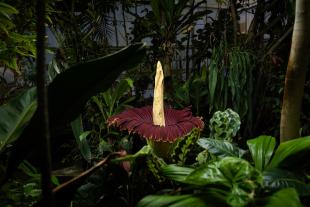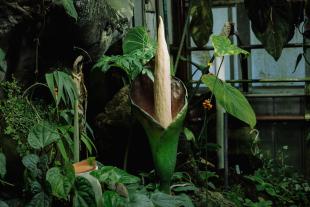Fighting Fire with Fire: Students Take Part in First-Ever Prescribed Burn on Campus
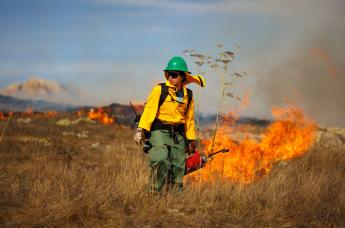
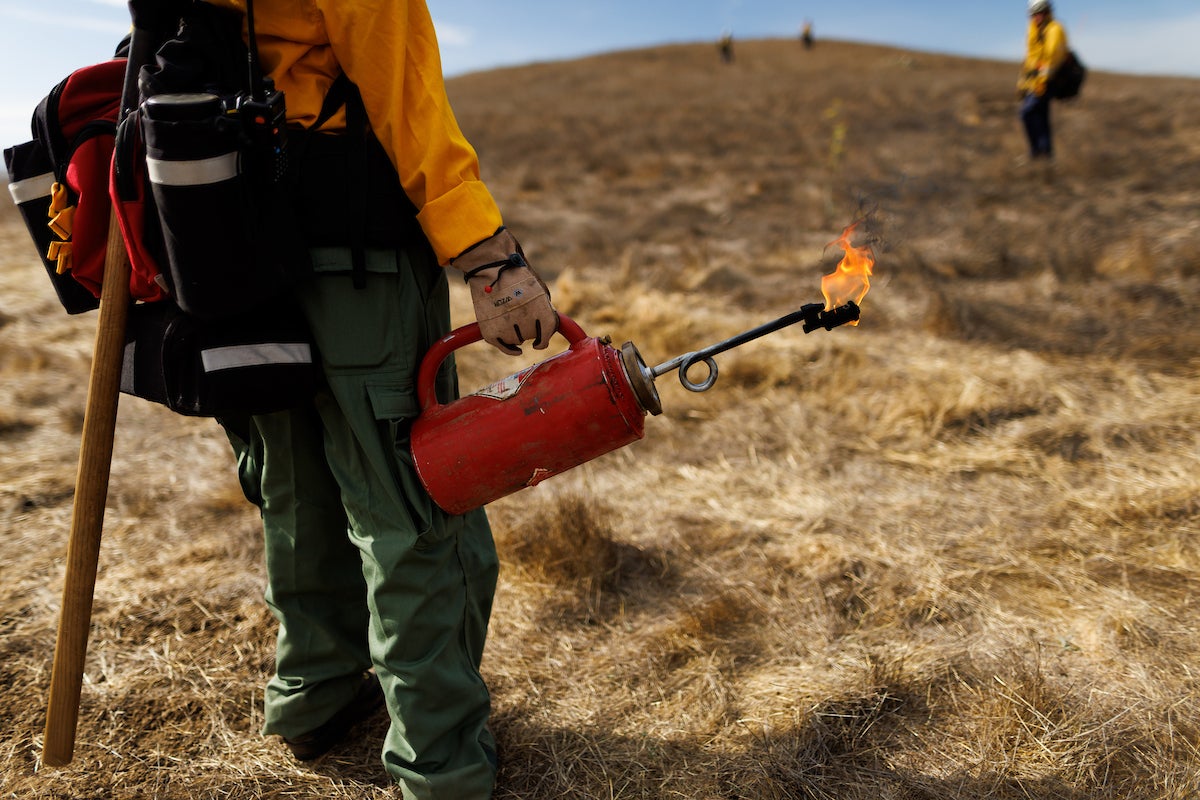
The crackle of burning grass and the shimmer of rising heat turned a quiet campus hillside into an open-air classroom. As orange flames danced across the slope, students clad in fire-resistant clothing and carrying tools on their backs, stood poised and ready nearby — learning not from textbooks, but from fire itself.
The prescribed burn — the first of its kind held on the Cal Poly campus — was no ordinary lab session. In fact, for the 24 students there, it was a unique hands-on lesson in ecology and land stewardship. For many of them, it was the closest they had been to the front lines of fire management.
Students in natural resources and environmental management professor Ashley Grupenhoff's prescribed burn senior project class gained real-world experience in ignition techniques, fireline safety and ecosystem restoration while helping reduce wildfire risk and promote healthy grasslands. The Oct. 13 prescribed burn was the result of more than a year of planning and partnership between Cal Poly, Cal Fire, the U.S. Forest Service and California State Parks.
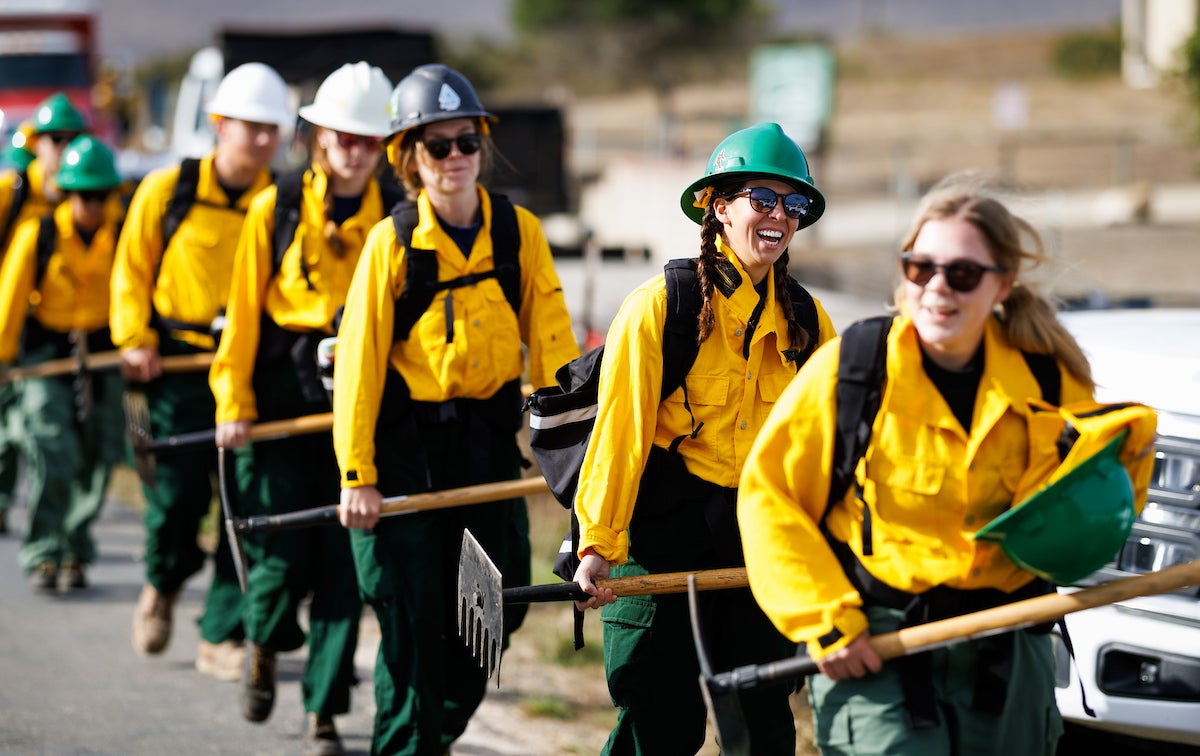
“It’s important for our students to understand the new reality of wildfires and to explore the range of management tools available to mitigate this challenge,” said Grupenhoff, a fire ecologist whose research on how fire impacts wildland ecosystems sparked her passion for prescribed and cultural burning, an Indigenous land management practice, as methods to restore ecosystem resilience and manage natural resources. “This was an amazing opportunity to introduce students firsthand to prescribed fire, which is increasingly being used across California as a powerful tool for fire mitigation and ecosystem health.”
Students, divided into four squads and paired with Cal Fire and California State Parks personnel, worked to burn 26 acres of grassland at Cal Poly’s Escuela Ranch, about eight miles north of Cal Poly’s main campus.
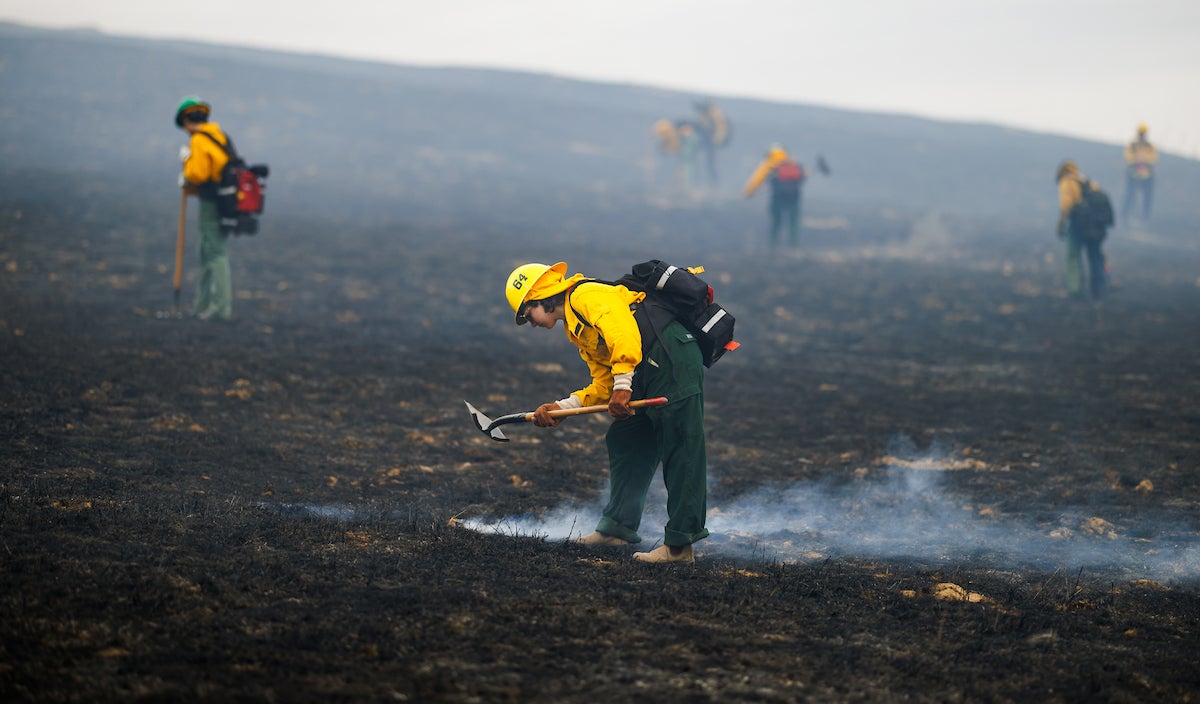
The 5,000-acre ranch is used by students and faculty throughout the year for hands-on learning and applied research in rangeland and livestock management. The parcel that was selected for the burn, typically used for grazing cattle, was prepared months in advance by the college’s agricultural operations staff, who created 15-foot-wide bulldozed control lines around its perimeter.
Clutching a drip torch, fourth-year forest and fire sciences major Belen Sibal carefully walked in tandem with four other students in her squad, igniting the dried grass in a symmetrical line. Meanwhile, other students stood watch, making sure that the flames stayed in the contained area and didn’t jump the line.
“To be able to see firsthand how fire can be productive and not scary is a great opportunity,” said Sibal, who worked over the summer as a forestry technician for Sierra Pacific Industries in Shasta County, California. “It is important to recognize that Indigenous people have used fire as a tool for thousands of years — our entire American landscape has been altered by burning in a positive way.”
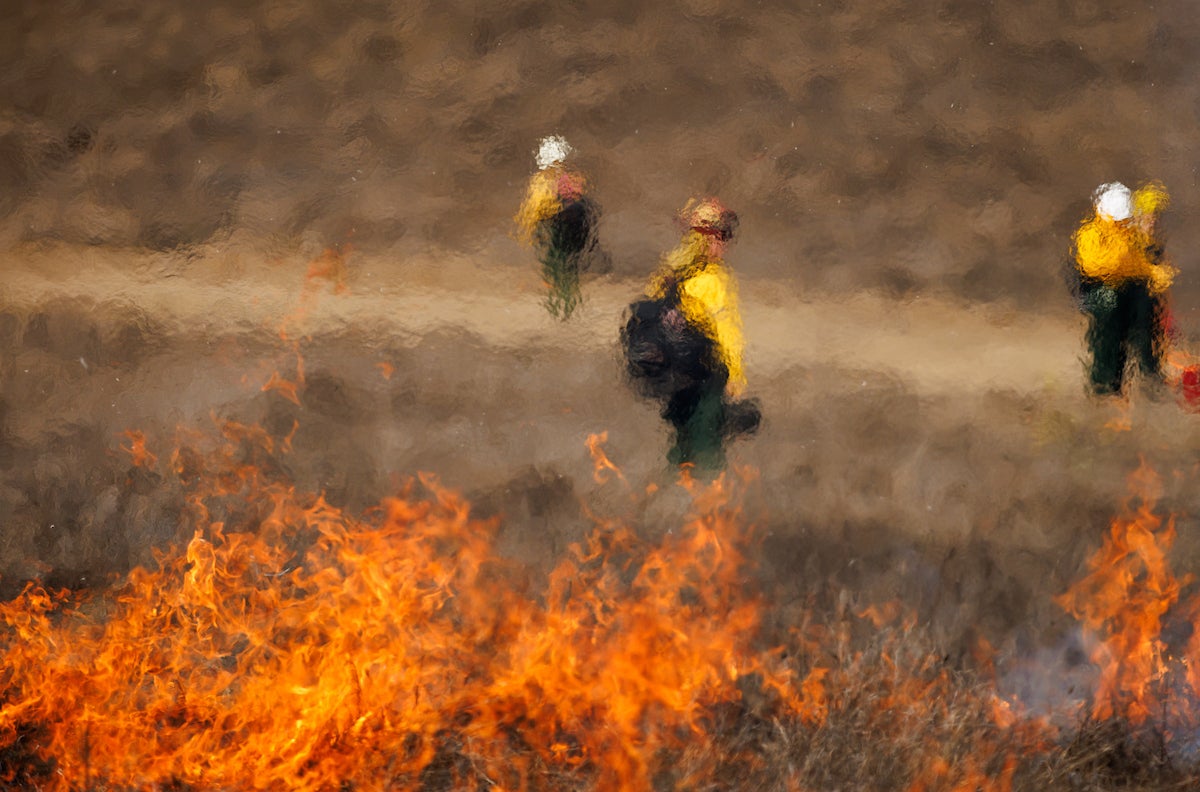
Other students, like fourth-year forest and fire sciences major Fiona Worrell, welcomed the experience because it broadened her understanding of fire ecology as a whole.
“Working on prescribed burns is a way to get a hands-on understanding without actually working directly as a firefighter — it is invaluable knowledge to have.”
Mike Walgreen, a senior environmental scientist with California State Parks, helped to guide students through the process.
“To give students their first experience in prescribed fire as a tool before they launch into their careers is a great experience,” he said. “Above all, we are teaching safety because you don’t want to ever be complacent.”
All agencies welcomed the collaboration, recognizing its positive impact on supporting student learning and preparing workforce-ready graduates.
“This was an outstanding example of collaboration in prescribed fire,” said Luke Bourgault, fuels battalion chief for Cal Fire San Luis Obispo unit.
The students’ work, he said, would improve the land’s forage value, reduce invasive plant species, strengthen the landscape’s resilience against future wildfires, and enhance both firefighter access and student evacuation routes.
“Learn by Doing is the epitome of what was done at this event and it is impressive to see the students’ aptitude for this work — from the planning stages to the implementation.”
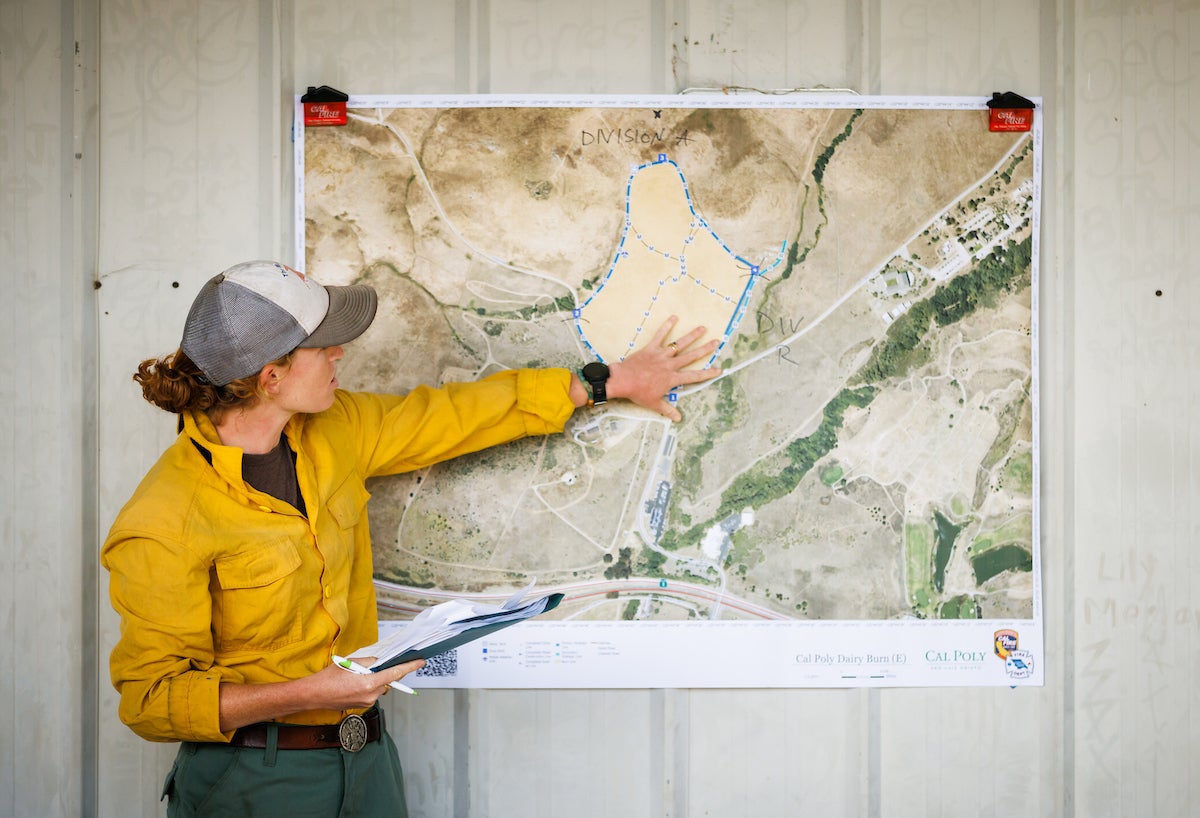
Grupenhoff said she hopes this will be the first of many prescribed fires used to manage Cal Poly’s resources. “Fire can be a positive tool in building community,” Grupenhoff said. “Working on the land is something that brings people together. For many, fire is something scary that they want to avoid. This is fighting fire with fire and creating a tool for resiliency.”
This story first appeared in the Fall 2025 issue of Cultivate Magazine.
Want more Learn by Doing stories in your life? Sign up for our monthly newsletter, the Cal Poly News Recap!



